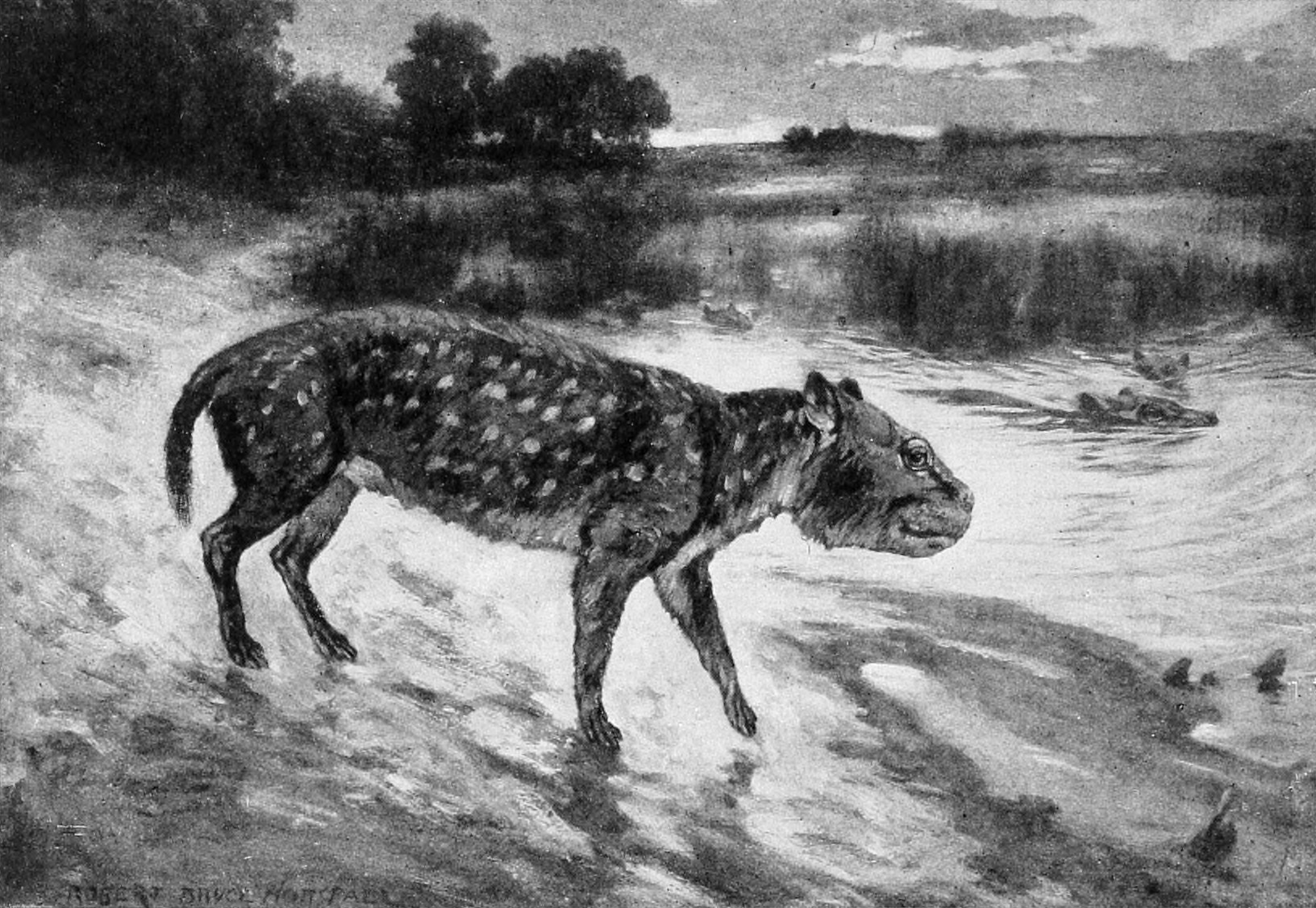Sespia on:
[Wikipedia]
[Google]
[Amazon]
''Sespia'' ("of ''Sespia'' at fossilworks
/ref> ''Sespia'' was cat to goat-sized and desert-dwelling. The genus was closely related to the larger '' Fossils of the best known species, the cat-sized ''S. californica'', have been found
Fossils of the best known species, the cat-sized ''S. californica'', have been found
Sespe Creek
Sespe Creek (Chumash: S'eqp'e', "Kneecap") is a stream, some long,U.S. Geological Survey. National Hydrography Dataset high-resolution flowline dataThe National Map accessed March 16, 2011 in Ventura County, southern California, in the Western ...
") is an extinct genus
Genus ( plural genera ) is a taxonomic rank used in the biological classification of extant taxon, living and fossil organisms as well as Virus classification#ICTV classification, viruses. In the hierarchy of biological classification, genus com ...
of oreodont
Merycoidodontoidea, sometimes called "oreodonts" or "ruminating hogs", is an extinct superfamily of prehistoric cud-chewing artiodactyls with short faces and fang-like canine teeth. As their name implies, some of the better known forms were gen ...
endemic to North America
North America is a continent in the Northern Hemisphere and almost entirely within the Western Hemisphere. It is bordered to the north by the Arctic Ocean, to the east by the Atlantic Ocean, to the southeast by South America and the Car ...
. They lived during the Late Oligocene
The Chattian is, in the geologic timescale, the younger of two ages or upper of two stages of the Oligocene Epoch/Series. It spans the time between . The Chattian is preceded by the Rupelian and is followed by the Aquitanian (the lowest stage ...
26.3—24.8 mya, existing for approximately ./ref> ''Sespia'' was cat to goat-sized and desert-dwelling. The genus was closely related to the larger ''
Leptauchenia
''Leptauchenia'' is an extinct goat-like genus of terrestrial herbivore belonging to the oreodont family Merycoidodontidae, and the type genus of the tribe Leptaucheniini. The genus was endemic to North America during the Late Oligocene to Earl ...
''.
 Fossils of the best known species, the cat-sized ''S. californica'', have been found
Fossils of the best known species, the cat-sized ''S. californica'', have been found California
California is a U.S. state, state in the Western United States, located along the West Coast of the United States, Pacific Coast. With nearly 39.2million residents across a total area of approximately , it is the List of states and territori ...
and are known from literally thousands of specimens. The largest species, the goat-sized ''S. ultima'', is known from late Oligocene deposits in Nebraska
Nebraska () is a state in the Midwestern region of the United States. It is bordered by South Dakota to the north; Iowa to the east and Missouri to the southeast, both across the Missouri River; Kansas to the south; Colorado to the southwe ...
. ''S. ultima'' was once placed in a separate, monotypic, genus as ''Megasespia middleswarti''. Other species were once placed within ''Leptauchenia''.
References
External links
San Diego Natural History Museum
The San Diego Natural History Museum is a museum located in Balboa Park in San Diego, California. It was founded in 1874 as the San Diego Society of Natural History. It is the second oldest scientific institution west of the Mississippi and th ...
"Fossil Mysteries Field Guide: ''Sespia californica''
Oreodonts
Oligocene even-toed ungulates
Fossil taxa described in 1930
Prehistoric even-toed ungulate genera
{{paleo-eventoedungulate-stub